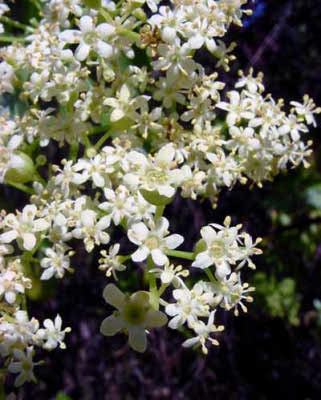
Green leaves rot faster
 Although
the tree leaves I've been adding to my garden have some nutrients, they
are really the iceberg lettuce of the organic fertilizer world.
They're primarily useful as an erosion-resistant mulch and, eventually,
to boost the organic matter of my soil. As I read about leaf
decomposition, I came to realize that if I want to put really high
quality leaves on my garden, I need to pick them green.
Although
the tree leaves I've been adding to my garden have some nutrients, they
are really the iceberg lettuce of the organic fertilizer world.
They're primarily useful as an erosion-resistant mulch and, eventually,
to boost the organic matter of my soil. As I read about leaf
decomposition, I came to realize that if I want to put really high
quality leaves on my garden, I need to pick them green.
Green leaves are chock
full of micro and macronutrients. But
trees aren't dumb; when autumn comes, the plants suck as many nutrients
as they can out of their leaves. Nitrogen content of fallen
leaves is often less than half that in the same tree's green leaves,
while the percent of lignin in fallen leaves more than doubles.
The result? Green leaves decay
much faster and release more nutrients into the soil.
Suddenly, I understand
why various books have recommended growing
shrubs like elderberries and hazels to be coppiced. If I cut
green shoots of these trees during the growing season and use them for
mulch, the mulched plants will get a much greater boost of nutrients
than if I'd waited and raked up the fallen leaves.
Mafongoya, P.L., K.E. Giller, and C.A. Palm. 1998.
Decomposition and nitrogen release patterns of tree prunings and
litter. Agroforestry Systems.
38: 77-97.
| This post is part of our Leaves for Fertility lunchtime series.
Read all of the entries: |
Want more in-depth information? Browse through our books.
Or explore more posts by date or by subject.
About us: Anna Hess and Mark Hamilton spent over a decade living self-sufficiently in the mountains of Virginia before moving north to start over from scratch in the foothills of Ohio. They've experimented with permaculture, no-till gardening, trailersteading, home-based microbusinesses and much more, writing about their adventures in both blogs and books.
Want to be notified when new comments are posted on this page? Click on the RSS button after you add a comment to subscribe to the comment feed, or simply check the box beside "email replies to me" while writing your comment.
